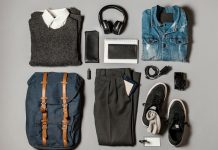Interested to learn about fashion trends in the future? We have examined rising fashion trends. Fashion has always been a play area for innovators of all types for social and technical transformation. Rising fashion trends are inclined and altered by sustainability and digitization, respectively. Digitalization and sustainability are not mutually exclusive. In reality, a lot of sustainable innovations can only be put into practice through digital methods. The fashion business strives to maintain a careful balance between tradition and modernity. Designers strive to create collections that feel consistent with their earlier work while yet pushing their ideas ahead and providing inspiration for a fresh season of fashion. That a result, we experience the same ups and downs of trends as designers do, just as customers. Do we want to be attainable or aspirational? Do we go shopping right now?
1. Putting Health and Well-Being First
Since Corona, health has been a significant trending subject. Textile producers and businesses have been experimenting with clothing’s health-promoting qualities for many years. We have also discovered that being able to dress comfortably is considerably more pleasant at the home office. In essence, for decades, fashion has been heading in a more relaxed way. The major sources of inspiration for this are sports and outdoor clothing. Another common health topic that has benefited greatly from the epidemic and is anticipated to have a long-term positive impact on the outdoor industry is mental health. The incessant stress of our daily lives is said to be balanced by spending time outside and in nature.
2. Reduce Your Carbon Footprint with Second-Hand Clothing
More and more shops, brands, and customers are switching to alternate consumption patterns rather than producing or buying new goods. More and more companies and merchants are making investments in innovative resale business models and adding used products to their normal product offerings.
3. Using a Circular Economy to Reduce Resource Consumption
Many companies are already making a significant effort to solve the circular economy problem. This is mostly due to the need for cooperation along the whole value chain up to the disposal facility. Utilizing recycled materials during manufacture is not sufficient; the completed product must also be recyclable after usage. Because only one material was utilized, or because it is simple to separate the pieces from one another. With its predilection for synthetic material compositions and coatings, the outdoor industry in particular still faces several difficulties.
4. Lowering One’s Carbon Footprint
Regenerative is the way of the future; organic is today. This means that businesses should progressively aim to employ raw materials that have been produced in a climate-positive way as well as those that have been produced responsibly, especially in light of the climate objectives. Their carbon impact is reduced. It only makes sense to start here because, for textile producers, their goods typically account for the majority of their carbon impact. For instance, if you want cotton, you should only buy it from suppliers that practice regenerative eco-agriculture, which helps the soil absorb carbon.
5. Personalization Experts Are in High Demand
Because “one size fits all” is no longer relevant, generalists are struggling to maintain their credibility. This does not just imply that, in the future, the fit of clothes will be more precisely geared to “actual” bodies, for instance through body scanning technology or individual avatars.
6. Digital Clothing
With the help of 3D technology, fashion is reaching a new developmental stage. A growing number of fashion firms are switching to 3D product creation. It is now impossible to distinguish between a digitally created product picture and a photograph due to advancements in technology. Fashion firms may sell their goods online as well as in the physical world because fashion is becoming more and more significant there.
7. Digital shopping ought to be a public event
Online shopping is becoming more popular, but it’s still not a pleasant experience. Live shopping is the solution. The trend is already a widespread, high-revenue occurrence in China. Live shopping is already used in 20% of internet transactions there, and the practice is on the rise. All of this has just recently—within the past five to six years—become entrenched.
Concluding Fashion Trends
Future fashion trend predictions are influenced by the market’s ability to support innovation. People are more and more interested in new things as the fashion of the future becomes a current trend. Only now do predictions for the next fashion trends appear wonderful and fantastical. In actuality, they are rather near.









